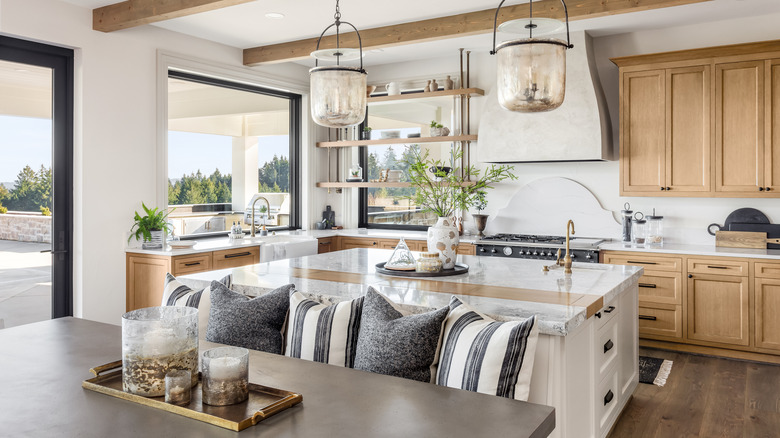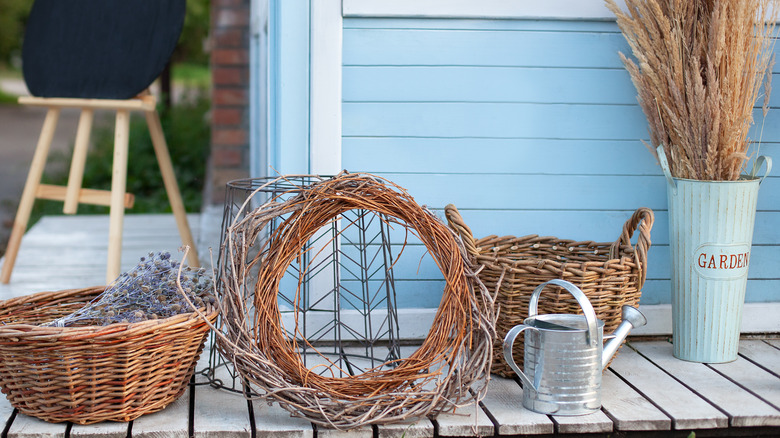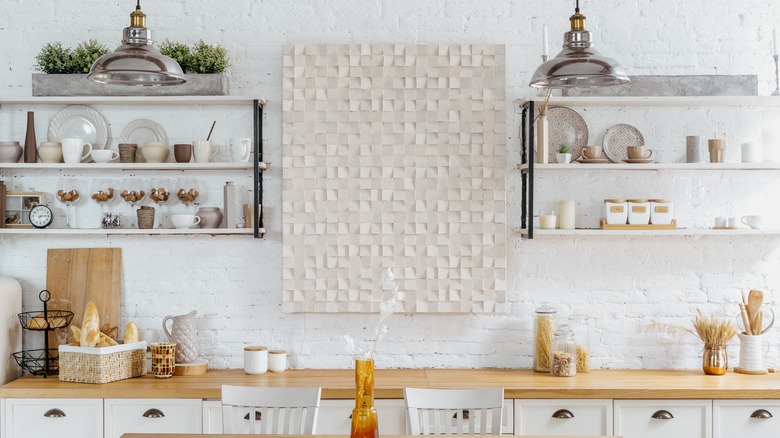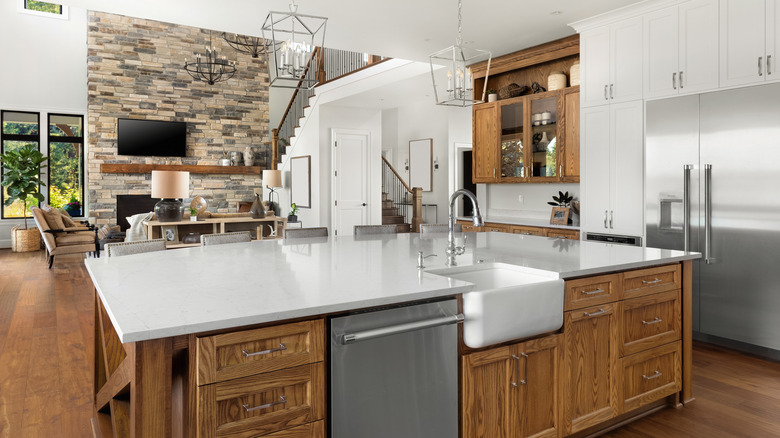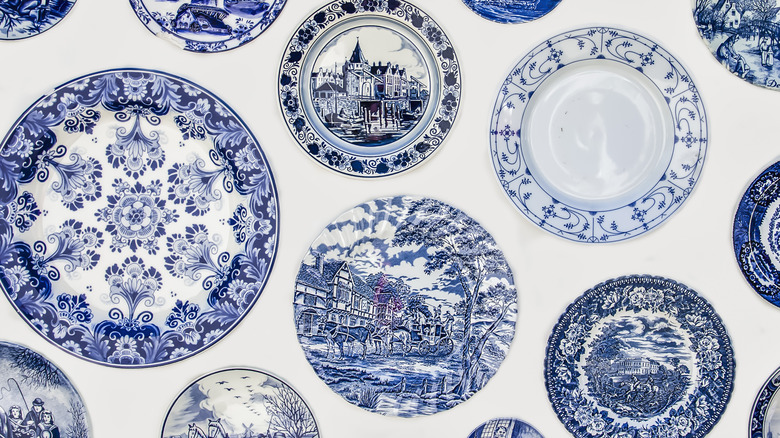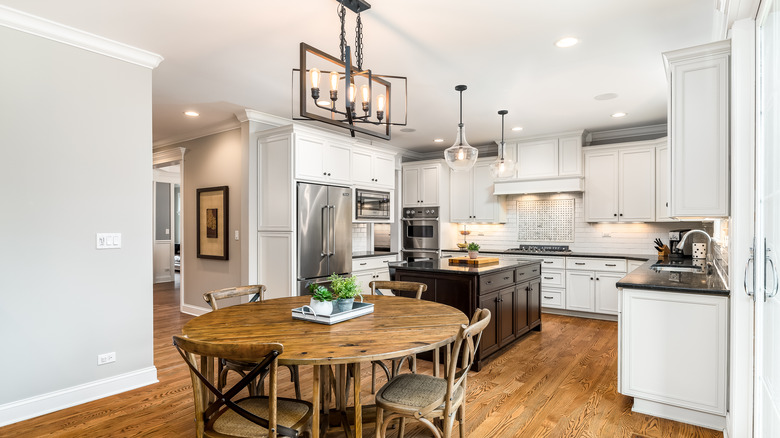5 Best Fixer Upper Tips To Use In Your Own Home
Modern farmhouse designs tend to borrow from traditional concepts. Farming families would often repurpose and made use of the materials they had on hand to create simple, but cozy homes. While other interior design styles that developed throughout the 1900s had very specific ways of combining patterns, furniture styles, and accents, farmhouse wasn't really a design style, but rather a way to create a home where frugality and functionality determined what you had, notes Hunker. Towards the end of the 1900s and early 2000s, farmhouse decor began to show up in relatively obvious but unimaginative ways, such as incorporating cow figurines or rooster and vegetable motifs.
Fixer Upper's Joanna Gaines has helped popularize the modernized farmhouse aesthetic. According to HGTV, it still emphasizes simplicity and a fondness for reclaimed materials, but it also focuses on adding beauty, as well as accents that represent the homeowner's personality. Here are the best Fixer Upper tips that you can use to bring a farmhouse style into your home.
Natural Accents
Where other design styles might focus on adding plants or flowers to incorporate nature, the farmhouse style expands on this concept by including different types of natural elements that can be used as part of your decor. Taking inspiration from traditional farm life, suitable materials may include wood, metal, stone, perhaps reeds or grasses, wicker, and plants.
Joanna Gaines recommends using rustic or repurposed wood for items like tables or desks or using unfinished beams as fireplace mantels. Galvanized steel, which is affordable and rust-resistant (per National Material), can be used for containers, light fixtures, or coffee tables, with some great examples seen on Homedit. Alternatively, wicker, bamboo, and jute are natural materials that can be used for baskets, picture frames, lampshades, or ottomans. If you live near the ocean, you can also try adding seashells or other beachfront finds for your own take on a farmhouse vibe.
An abundance of light
If you're lucky enough to have a home with large windows, Joanna Gaines points outs that natural light makes a room feel more spacious. Alternatively, a similar look can be achieved by adding a combination of different light fittings, such as recessed lights or hanging light fixtures.
In a kitchen, under-mounted cabinet lights add depth, while the ever-popular pendant lights can be installed over an island or dining table. For living areas, consider putting recessed lights on different switches so you can adjust the amount of lighting for ambiance and mood. Try adding lights to focus attention on pieces of artwork, reading areas, or decorative items. According to HGTV, Gaines often leaves out window coverings to allow as much light as possible into the room, but if that's not an option for you, maybe consider blinds that can be raised and lowered, so that you can capture the light without sacrificing privacy.
Select a focal point
A focal point is what captures your attention when you first walk into a room, explains Serendipity. It is possible to have more than one focal point in one room, which may be based on the room's architectural elements or shapes, such as a fireplace or bay window. Since the farmhouse style relies on neutral colors as the backdrop, Gaines recommends incorporating a rustic, dark wood sideboard or cabinet to serve as a focal point in a living room (via HGTV).
In kitchens, you can create a focal point with a unique backsplash around your oven or perhaps with a decorative wooden or metal oven hood, notes Cliq Studios. Farmhouse-style sinks with their overhanging aprons also draw attention. In bedrooms, the focal point is usually the bed, so framing it with a headboard, or artwork using a reclaimed wood frame, can bring in a touch of farmhouse styling.
Add details that reflect your style
Adding unique details to the simplistic, neutral farmhouse style is a way to add some contrast and bring in your own creativity and personality. Features such as vintage picture frames, round mirrors in the bathroom, or hanging decorative plates, (whether from a relative's old set or a thrift store) are all useful ways to add detail and wall decor, suggests HGTV.
Fabrics, artwork, and interesting items that reflect your taste are a fun way to add a pop of color. A dried wreath or a collection of framed, vintage seed packets can help to evoke the farmhouse style. And, there's nothing to say you can't include the rooster, cow, or chicken collection if that's what you like! There are endless ways to add personalized details to your rooms, whether they're whimsical, industrial, or traditional since it's the small details that add up to a finished look.
Use neutral colors as a backdrop
It makes sense that a neutral color palette serves as the basis for any farmhouse style. Traditional farmhouse families used natural materials that were available to them, mostly in shades of cream, grey, taupe, brown and black. HGTV writes that Gaines sees a neutral palette as a way of opening up rooms and creating an airy environment that brightens up a space.
While neutral colors are very restful and create a sense of simplicity, it doesn't mean your rooms have to be generic or boring, writes Homedit. Neutral does not mean that everything has to look the same. Neutral colors envelop a range of shades such as dark brown, honey-colored, or pale woods. Cream tones can also be crisp or bright, and work well with white or warm yellow tones. The great thing about neutrals is that they provide a background that allows your focal points to really stand out. Additionally, you can change the look of your rooms by simply changing accent items, such as pillows or throws, without reupholstering or repainting.
